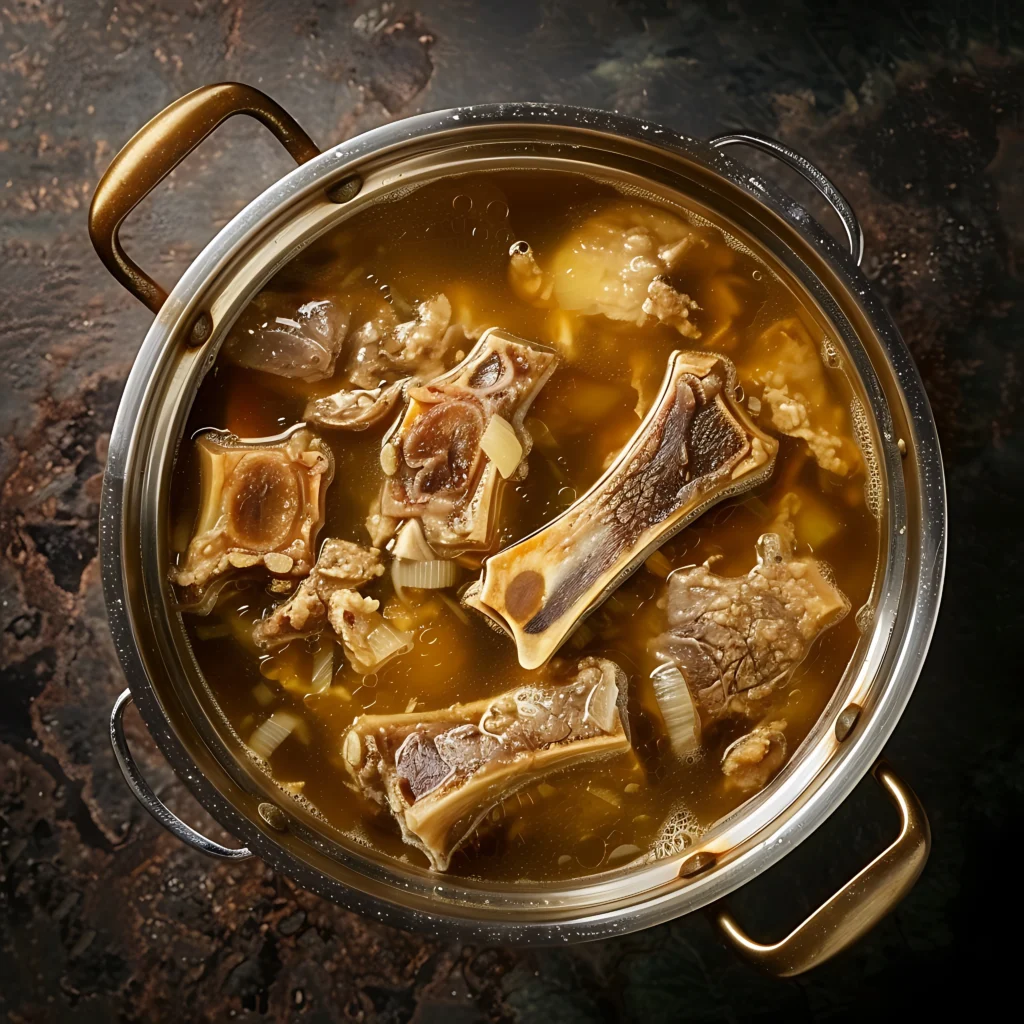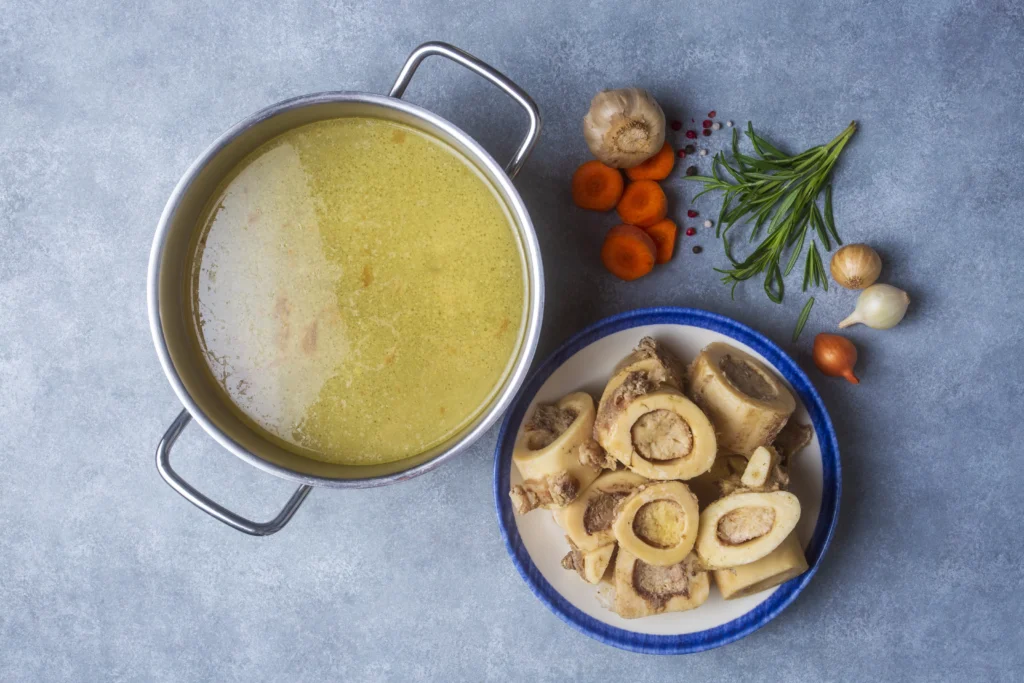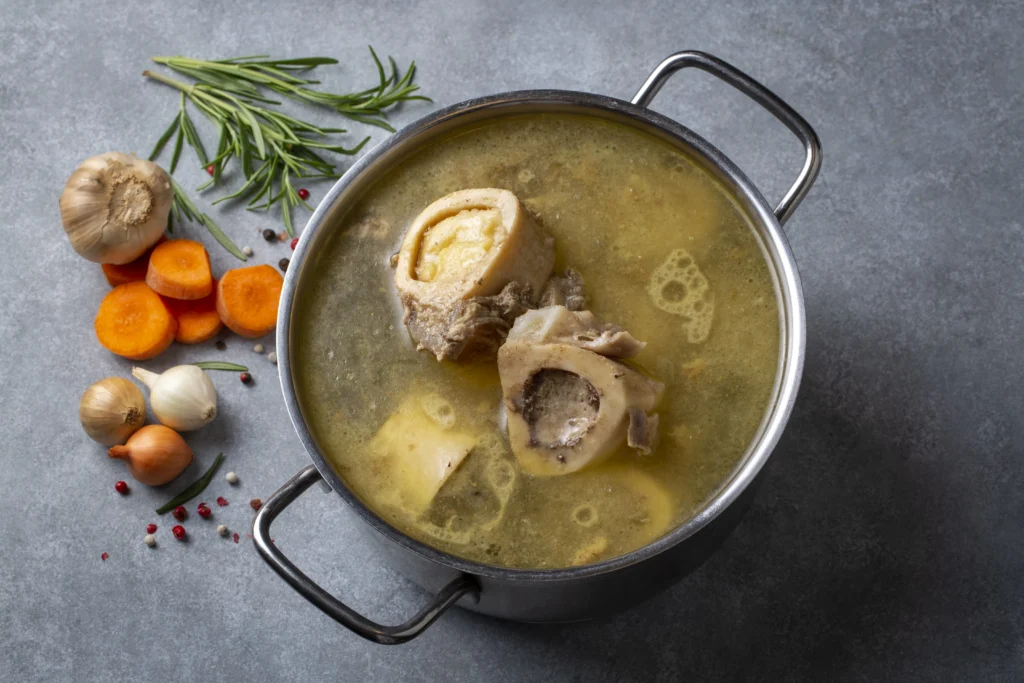Introduction: The Secret to a Perfect Bone Broth
Imagine the comforting aroma of a simmering pot of bone broth filling your kitchen—a scent that instantly warms your soul. Bone broth isn’t just a trend; it’s a tradition that has stood the test of time. Whether you’re making it for its rich, deep flavor or its health-boosting properties, one thing is certain: the quality of your soup bones makes all the difference.
If you’ve ever wondered which bones make the most nourishing and flavorful broth, you’re in the right place. This guide will walk you through everything you need to know about selecting the best soup bones, where to buy them, and how to prepare them for maximum benefits.
Why Bone Selection Matters for the Best Broth
The type of bones you use determines the broth’s quality:
- Flavor profile – Richer bones create a deeper, more complex flavor.
- Nutrient Density – Some bones contain more minerals, collagen, and gelatin than others.
- Texture – The right bones help produce a thick, nutrient-rich broth.
Using high-quality, properly sourced soup bones ensures your broth is not just tasty but also packed with nutrients essential for joint health, digestion, and overall well-being.
Best Soup Bones to Use for a Rich and Nutritious Broth
1. Marrow Bones – The Flavor Powerhouse
- Found in beef, bison, and lamb.
- Rich in healthy fats and minerals.
- Adds a deep, buttery flavor to broth.
2. Knuckle Bones – The Ultimate Collagen Booster
- High in gelatin and connective tissue.
- Comes from beef, pork, or veal.
- Produces a thick, silky broth when simmered for long hours.
3. Oxtail – A Hidden Gem for Bone Broth
- Contains both marrow and connective tissue.
- Requires long cooking times for full nutrient release.
- Creates a broth that is exceptionally rich and flavorful.
4. Chicken Feet and Carcass – Light but Nutrient-Rich
- High in collagen, glucosamine, and chondroitin.
- Great for a clear, golden broth.
- Ideal for those who prefer lighter, poultry-based broths.
5. Fish Bones – An Omega-3 Powerhouse
- Quick-cooking, nutrient-dense option.
- Best from salmon, halibut, and cod.
- Delivers a light, mineral-packed broth.

Where to Buy the Best Soup Bones
Local Butchers and Farmer’s Markets
- Fresh, high-quality bones from grass-fed and pasture-raised animals.
- Ability to customize your selection (e.g., marrow vs. knuckle bones).
Online Specialty Stores
- Convenient for bulk purchases.
- Trusted sources often sell organic, hormone-free options.
Grocery Stores
- Some supermarkets have a butcher section where you can request specific bones.
- Look for free-range poultry and wild-caught fish bones.
Preparing Soup Bones for a Rich and Flavorful Bone Broth
Roasting vs. Raw – Which is Better?
- Roasting enhances the flavor by caramelizing the bones.
- Raw bones create a cleaner, lighter broth.
Soaking and Blanching – Removing Impurities
- Soak bones in cold water for 30 minutes.
- Blanch in boiling water for 10 minutes, then discard the water.
Best Bone Broth Recipe – Step-by-Step Guide
Ingredients for a Perfect Bone Broth
| Ingredient | Quantity | Purpose |
|---|---|---|
| Beef Soup Bones | 2-3 lbs | Rich flavor, collagen |
| Apple Cider Vinegar | 2 tbsp | Helps extract minerals |
| Onion, Carrots, Celery | 1 each | Adds depth and sweetness |
| Garlic Cloves | 3-4 | Enhances flavor and nutrition |
| Bay Leaves, Thyme | To taste | Herbal notes |
| Water | Enough to cover bones | Main base |
Cooking Instructions
- Roast bones at 400°F (200°C) for 30 minutes (optional but recommended).
- Put the bones into a slow cooker, stockpot, or Instant Pot.
- Cover with filtered water and add apple cider vinegar.
- Let sit for 30 minutes before turning on heat.
- Let it simmer for 12 to 24 hours for beef or 6 to 12 hours for chicken or fish.
- Strain the broth and store it in glass jars or ice cube trays.

Tips for Making the Best Bone Broth
- Simmer for longer to extract maximum nutrients.
- Use vinegar to enhance mineral extraction.
- Skim impurities for a clear broth.
- Store properly to retain freshness.
Mistakes to Avoid When Making Bone Broth with Soup Bones
- Skipping Roasting – Results in a bland broth.
- Too Much Water – Weakens the flavor.
- Not Adding Vinegar – Reduces nutrient extraction.
- Boiling Instead of Simmering – Makes the broth cloudy.
How to Store and Use Bone Broth
- Refrigeration: Keeps for up to 5 days.
- Freezing: Stores well for 6 months in ice cube trays.
- Usage Ideas: Soups, sauces, rice cooking, or sipping for health benefits.
Conclusion – Why the Right Soup Bones Matter
Selecting the right soup bones is essential for making a rich and nutritious bone broth. With the right selection and preparation, you can create a broth that is not only delicious but also packed with essential nutrients. Whether you’re sipping it for health benefits or using it as a base for soups and stews, investing in quality bones makes all the difference.
Ready to start your bone broth journey? Try this recipe and share your thoughts in the comments!
FAQ – Everything You Need to Know About Soup Bones for Bone Broth
What are the best soup bones for a thick, gelatinous broth?
Knuckle bones, oxtail, and chicken feet are ideal for maximizing collagen and thickness.
Can I reuse soup bones to make a second batch of broth?
Yes, but the second batch will have a milder flavor and fewer nutrients.
Is bone broth good for gut health?
Yes! It is rich in collagen, amino acids, and gelatin, which help support gut health and digestion.
How long should I simmer soup bones?
- Beef/Pork: 12-24 hours
- Chicken: 6-12 hours
- Fish: 4-6 hours
Do I need to add vinegar to my broth?
Yes! Apple cider vinegar aids in extracting minerals from the bones.
